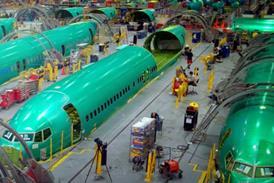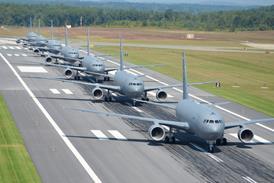David Learmount/LONDON
Efforts in late 1999 to redress shortcomings in Gulf Air's safety culture were too late to prevent the mistakes leading to the 23 August 2000 Airbus A320 crash in Bahrain, according to the technical report just released by Bahrain's Department of Civil Aviation Affairs. The full accident report is still being prepared.
The captain was flying the aircraft manually when the aircraft crashed into the sea to the north of Bahrain airport following a night go-around from a VOR/distance measuring equipment approach to runway 12.
The crew had accepted clearance to carry out a climbing turn left onto a 300° heading at 2,000ft (600m) for radar positioning to another approach, but the aircraft began to descend as a result of pilot disorientation. All 143 people on board died.
Although the report does not state it categorically, all the evidence points to pilot disorientation in the absence of a visible surface and perceptible horizon - despite good visual meteorological conditions. The report says that a spatial disorientation study, taking into account the effects on pilots of the total acceleration forces during go-around, is being conducted at the US Navy Medical Research Laboratory in Pensacola, USA.
The aircraft's ground proximity warning system had been sounding the "pull-up" alert for nearly 10s from 1,004ft above sea level until impact, but the captain's reaction was slow and uncertain and there had been no input from the copilot. At impact, the aircraft still had a 6° nose-down attitude and an airspeed of 282kt (520km/h). The captain's time on type had been only 86h, and the copilot had a total of 608h flying experience with all his 408h multi-crew time on the A320 with Gulf Air. The copilot had failed his type rating checks on the A320 at first attempt, faulted mainly on lack of proficiency in non-precision approach and departure procedures.
Gulf Air's safety oversight agency, Oman's Directorate General of Civil Aviation and Meteorology (DGCAM), requested an International Civil Aviation Organisation special safety evaluation of the airline in 1999, which raised criticisms related to the failure to follow up safety recommendations.
Most faults, said ICAO, were caused by "inadequate supervisory oversight", according to the accident report. The Lufthansa Consulting Group had been appointed by Gulf Air to upgrade the airline's safety management systems only two months before the accident. Since the crash, the airline has been reviewing its ab-initio recruitment and has increased simulator training for go-around manoeuvres.
Source: Flight International























